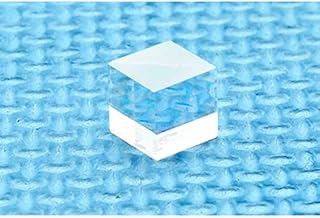Optical coherence tomography (OCT) has revolutionized noninvasive imaging, allowing for detailed examination of internal structures. Traditionally, techniques like electron microscopy were used, but they posed challenges due to sample damage. The OCT method involves splitting an illumination beam into two, generating interference patterns that reveal internal structures. This approach has found extensive applications, particularly in eye imaging for early pathological detection.
The challenge with traditional OCT lies in limited axial resolution and difficulty in observing opaque materials. Axial resolution in OCT is determined by the coherence length, which depends on the source bandwidth and central wavelength. To enhance resolution, X-ray coherence tomography (XCT) has emerged, utilizing extreme ultraviolet (EUV) and soft X-ray (SXR) radiation sources. The “water-window” spectral range (2.3–4.4 nm) is particularly useful for biological imaging due to natural contrast between carbon and oxygen.
A recent study presented an OCT setup with 2 nm axial resolution using broadband SXR radiation from a compact laser plasma source. The source was optimized for efficient SXR emission in the “water-window” range, enabling detailed imaging of multilayer structures with high resolution. Experimental data aligned with OCT simulations on ideal multilayer structures, showcasing the potential of this technology in various applications.
The experimental setup involved a laser plasma source created by nanosecond laser pulses interacting with a gas puff target. The emitted SXR radiation was used for OCT measurements on a multilayer Mo/Si structure. Results demonstrated an axial resolution of about 2 nm, allowing for precise imaging of multilayer interfaces up to a depth of 100 nm. The compact setup, with a desktop footprint, offers a promising avenue for widespread adoption of XCT in environmental, material sciences, and biology.
Further improvements in the experimental reconstruction process were proposed, including expanding the wavelength range to enhance depth profile accuracy. The study highlighted the importance of collecting sufficient spectral information for reliable depth reconstructions in XCT. Future advancements may include spatially localized XCT data acquisition for 3D reconstructions, enhancing the utility of this imaging technique in various fields.
📰 Related Articles
- iPad Pro Magic Keyboard Enhances User Experience with Innovative Features
- airBaltic Enhances Connectivity with New Vilnius-Prague Summer Route
- Xerox C235 Color Laser Printer: Affordable Quality for Businesses
- Wayfair’s Diverse Outdoor Furniture Collection Enhances Outdoor Spaces
- WAINLUX K8: Innovative Desktop Laser Engraving Machine Review






